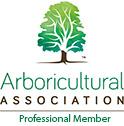Tree Inspection
Inspecting your tree regularly can help you to spot and catch changes in the characteristics of the trees health before disease, insect or fungi infection can become too serious. Generally Mature trees should be inspected every 6 – 12 months. There are four main characteristics to look out for and take note of when assessing your tree throughout the year.
- Bud Formation
- Leaf size
- Excessive or recessive twig growth
- Presence or absence of crown dieback
Growth reduction is a reliable cue that the trees health has recently changed. We, at Parklawn would be happy to look at your twig growth from last year to determine whether or not there is a visible reduction in the trees typical growth pattern.
Further signs of poor tree health are trunk decay, crown dieback, or both. These symptoms often indicate problems that began several years before. Loose bark, deformed growths, and fungii are common signs of stem decay. Any abnormalities found during these inspections, such as insect activity and/or spotted, deformed, discoloured, or dead leaves and twigs, should be noted and monitored closely. If you are uncertain about what to do, give us a call for our unbiased professional advice on treatment options.
Mulching & Fertilisation
Mulching can reduce environmental stress by providing trees with a more moderate root environment that has fewer temperature and moisture extremes than the surrounding soil. Mulch reduces competition from weeds and grass and prevents mechanical damage by keeping lawn care equipment away from the tree’s base. Using natural mulch, such as wood chippings will add nutrients to the soil. As the Wood chip material begins to decompose it releases nutrients which will help improve the overall soil biology. This can be very helpful as Trees in urban settings can often be growing in soils which are badly lacking in nutrients and minerals. To be most effective, mulch should be placed 2 to 4 inches (5 to 10 cm) deep and cover as much of the root system as possible. Slow release fertilisers may be used such as, fish blood and bone meal. These fertiliser break down slower and are more suited to the characteristics of Trees.
Pruning
Pruning is the cutting away of undesired or dead branches from a tree to improve its structure or to reduce risk. Pruning should be planned thoroughly and in the case of mature trees, only be carried out by a trained professional. Removal of branches can create lasting wounds and scars and must be cut properly so not to create a lasting wound. At Parklawn, we are members of the ISA (International Society of Arborists), where all our work is carried out to the highest standards.
Removal
Tree removal is generally the last choice, but there are circumstances where it is necessary. We are happy to call out and advise on whether or not it is a viable option to save a tree or whether the tree should be removed. Removal is generally recommended when a tree:
- Is dead, dying, or considered hazardous.
- Is causing an obstruction or overcrowding and causing harm to another tree and pruning is not a viable option
- Is to be replaced by a more suitable species.
- Needs to be removed for construction.
With proper maintenance, trees can add aesthetic and economic value to your property. Poorly maintained trees, on the other hand, can be a significant liability.







